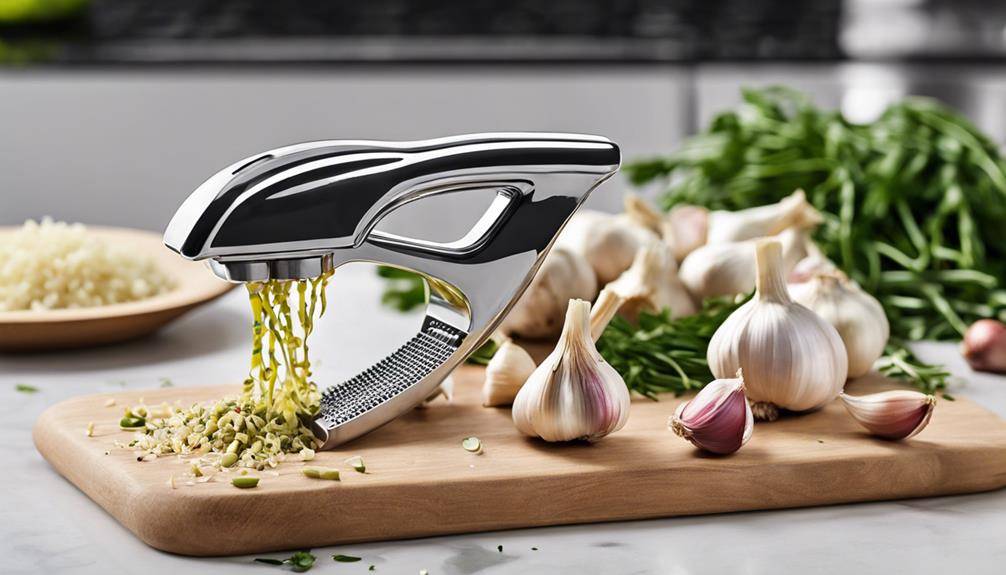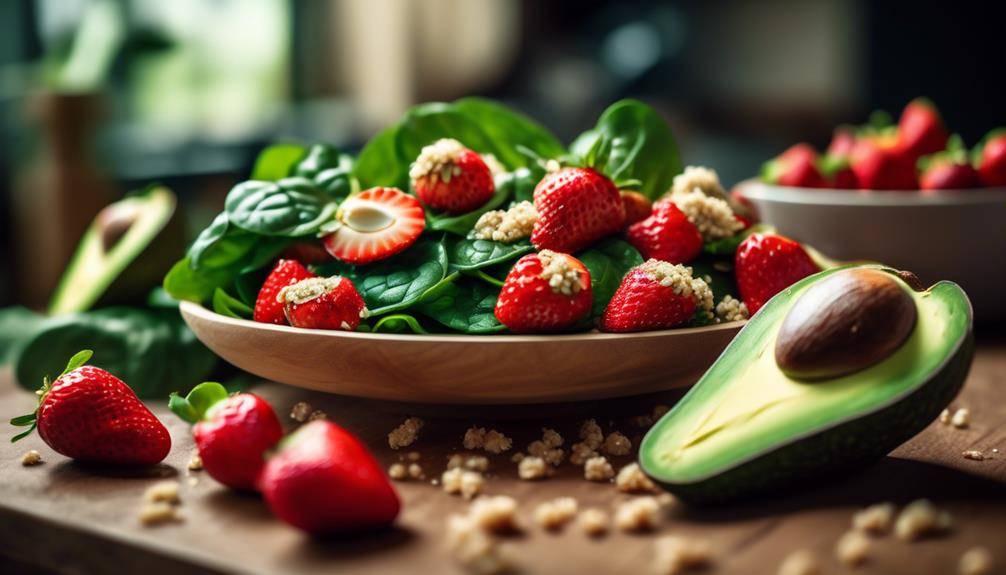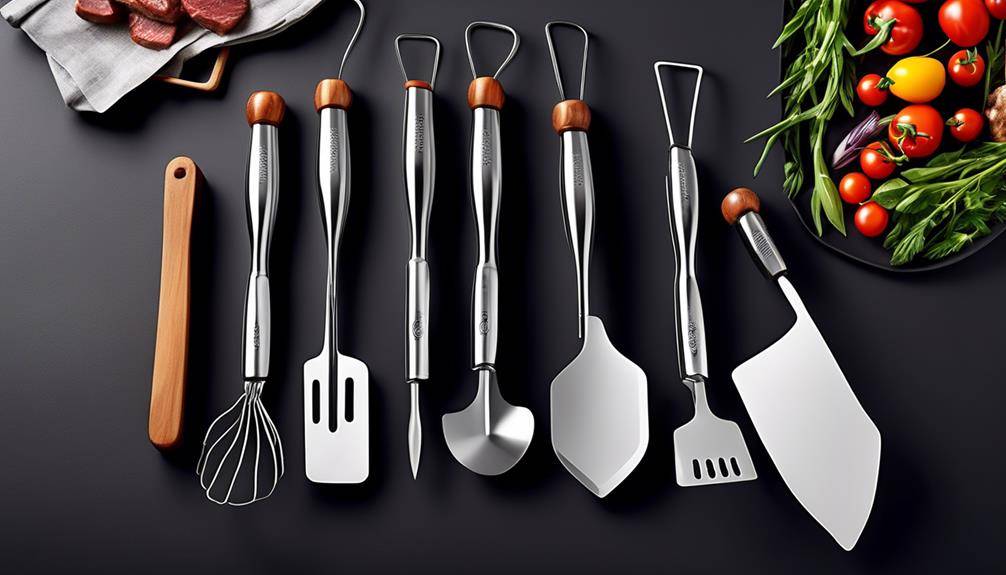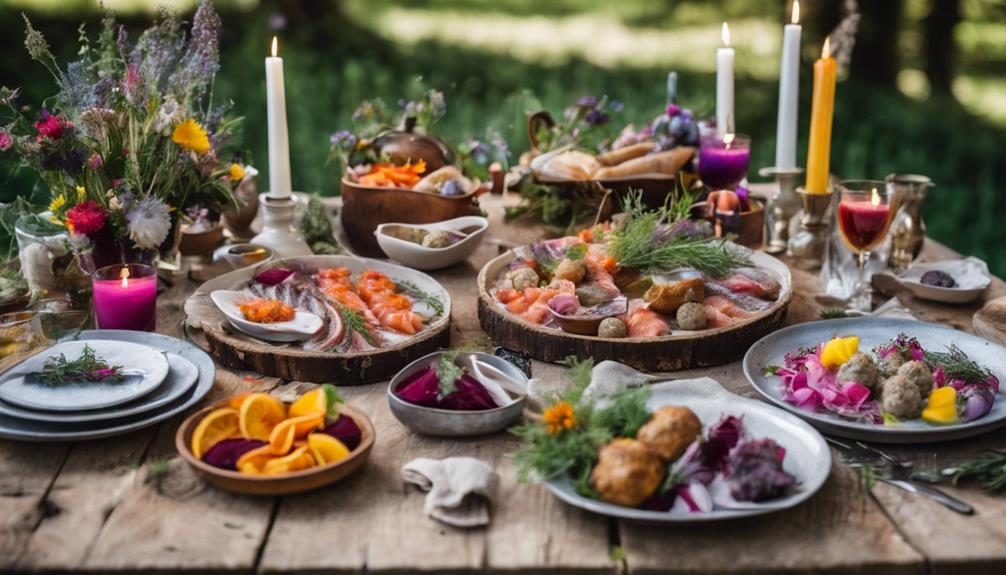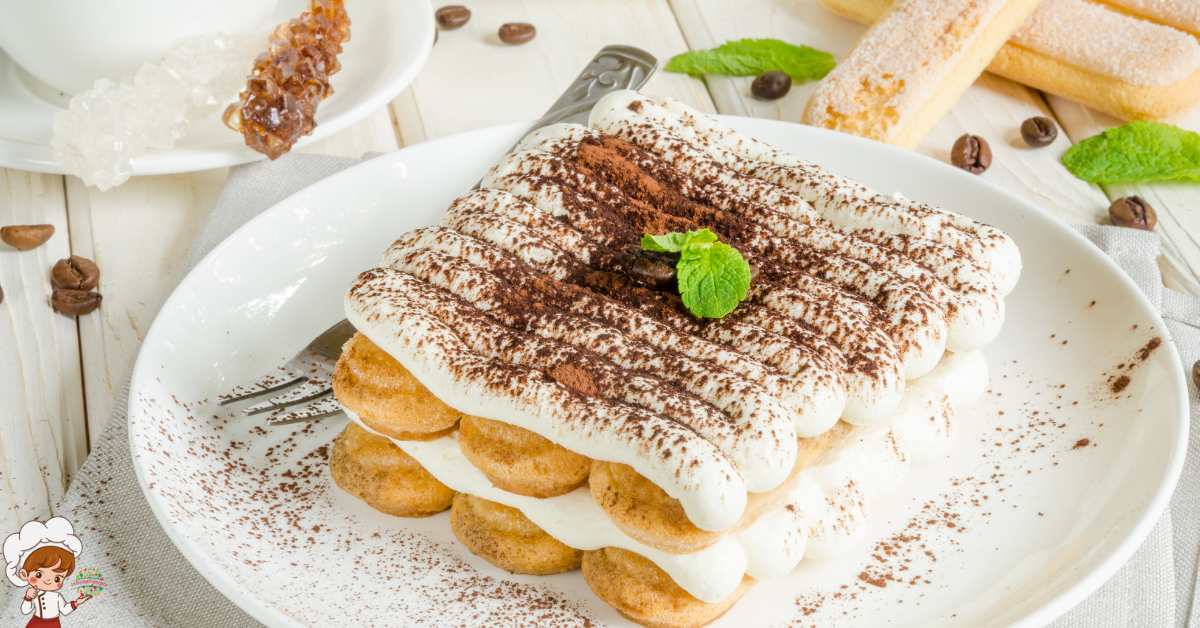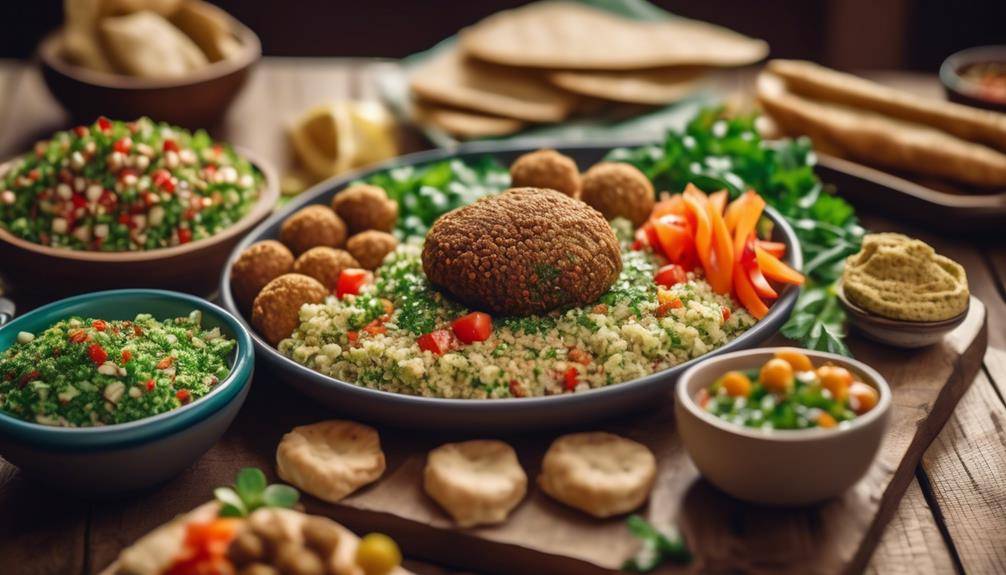The Best Glazing Techniques For Cooking Ham
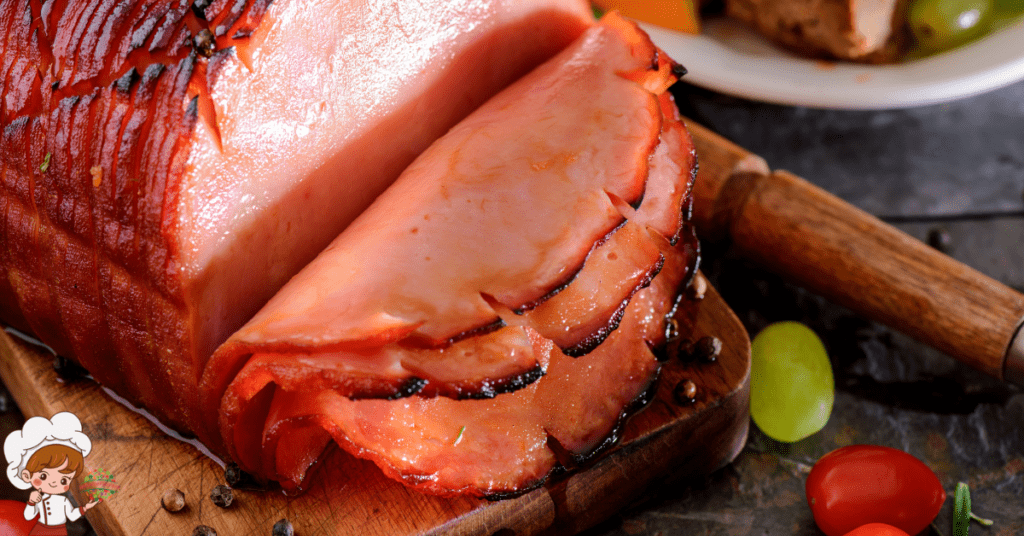
Best Glazing Techniques For Cooking Ham; To glaze your ham effectively, start by selecting a flavorful glaze like honey or brown sugar. Apply the glaze during the last 30 to 45 minutes of cooking for peak caramelization. Baste every 20 minutes to keep it moist and enhance the flavor. You can experiment with sweet, savory, or even smoky glazes by mixing ingredients like mustard, bourbon, or citrus juices. Don’t forget to add herbs or nuts for an extra crunch! For the final touch, apply a last layer just before removing it from the oven to achieve a glossy finish. There’s much more to explore!
Choosing the Right Ham
When it comes to choosing the right ham, you’ll want to take into account several factors to guarantee your dish turns out delicious. First, you should know the different types of ham available. You’ll generally encounter three main varieties: fresh, cured, and smoked. Fresh ham is uncooked, while cured ham has been preserved with salt or other curing methods. Smoked ham, on the other hand, has undergone a smoking process that adds distinct flavors. Each type offers a unique taste, so think about what you and your guests enjoy most.
Next, reflect on the cut. Bone-in hams tend to be juicier and more flavorful than boneless varieties, but boneless hams can be easier to carve and serve. Look for a ham that fits your cooking style and the occasion. Weight is another factor; a larger ham may be ideal for gatherings, while smaller hams suit intimate dinners.
When it comes to ham selection tips, always check for quality labels. USDA grading can guide you toward a higher-quality product. Additionally, inspect the color and texture. A good ham should have a uniform pink hue and a moist appearance. Ultimately, don’t forget to take into account the price. While it’s tempting to go for the cheapest option, investing a bit more often yields a better-tasting result. By keeping these tips in mind, you’ll be well on your way to selecting the perfect ham for your next meal.
Essential Glazing Ingredients
To create a mouthwatering glaze for your ham, you’ll want to focus on the right sweeteners and flavor enhancers. Ingredients like brown sugar, honey, or maple syrup can add that perfect touch of sweetness, while spices and citrus can elevate the flavor profile. Let’s explore how these components come together to make your ham truly irresistible.
Sweeteners for Glazes
A great glaze can elevate your ham, and sweeteners play an essential role in that transformation. You can choose from various sweetener types to achieve the perfect glaze consistency, adding depth to your dish. Natural sweeteners like honey or maple syrup offer rich flavors that complement the savory notes of ham. If you’re looking for sugar alternatives, consider agave nectar or coconut sugar, which provide a unique sweetness balance without overpowering the meat.
For those avoiding sugar, sweetener substitutes like stevia or erythritol can work wonders. You can even experiment with fruit purees, such as apple or peach, to bring a fruity dimension to your glaze. These purees not only add sweetness but also contribute to a luscious texture.
When selecting your sweeteners, think about the flavor profiles you want to highlight. A blend of sweeteners can create a more complex taste, enhancing the overall experience. Remember to adjust your ingredients based on your personal preferences, ensuring that your glaze perfectly complements your ham. With the right sweeteners, your ham will shine at any gathering!
Flavor Enhancers Options
Enhancing your glaze with flavorful ingredients can take your ham to the next level. Start by adding citrus zest for a bright, zesty kick that cuts through the richness. To give your glaze an umami boost, try incorporating soy sauce or miso paste; these ingredients deepen the flavor profile. Spice blends can elevate your glaze too, combining warmth and complexity that’s irresistible.
Consider using fruit purees, like apricot or apple, to infuse sweetness and acidity. Wine reductions bring a sophisticated touch, intensifying the flavors as they simmer down. Herb infusions, such as rosemary or thyme, add an aromatic freshness, making each bite more vibrant.
Don’t overlook the crunch—nut toppings, like chopped pecans or almonds, provide texture and a nutty flavor that complements the ham beautifully. Finally, explore mustard varieties; a tangy mustard can add a delightful contrast to the sweetness of your glaze. By mixing and matching these flavor enhancers, you’ll create a truly unique glaze that’ll have everyone asking for seconds.
Sweet Glazes for Ham
Sweet glazes for ham elevate the dish from ordinary to extraordinary, adding a delightful layer of flavor that complements the savory meat. These glazes are perfect for festive occasions, transforming your ham into a centerpiece that impresses your guests.
When you think about glaze variations, consider options like honey, brown sugar, maple syrup, or fruit preserves. Each brings its unique sweetness and flavor profile, allowing you to tailor the glaze to your tastes. For instance, a honey glaze infused with Dijon mustard offers a wonderful balance of sweetness and tang, while a maple syrup glaze with a hint of cinnamon can evoke the cozy feelings of the season.
If you’re looking to incorporate fruit, try a glaze made from apricot or pineapple preserves. These fruity options can provide a bright contrast to the ham’s rich flavor, making your dish even more appealing. Don’t forget to add some spices or citrus zest to enhance the sweetness and complexity of your glaze.
To apply the glaze, brush it generously over your ham during the last 30 to 45 minutes of cooking. This allows the sugars to caramelize beautifully, creating a shiny, flavorful crust. You can also baste the ham periodically to guarantee that every bite is packed with that irresistible sweet flavor. So, whether it’s a holiday gathering or a family dinner, a sweet glaze will surely make your ham a standout dish.
Savory Glazes for Ham
When you’re ready to switch things up, savory glazes can add a delicious twist to your ham. Consider a honey mustard glaze for a tangy kick, or try maple brown sugar for a rich depth of flavor. If you’re feeling adventurous, a spicy apple cider glaze can bring some heat to your dish.
Honey Mustard Glaze
A delicious honey mustard glaze can elevate your ham, adding a perfect balance of savory and tangy flavors. To create this mouthwatering glaze, start by selecting your preferred honey variations. For a classic touch, use clover honey, but if you’re feeling adventurous, consider trying orange blossom or wildflower honey for a unique twist.
Next, choose your mustard type. Dijon mustard offers a smooth and sharp flavor, while yellow mustard brings a more traditional tang. Combine equal parts of honey and mustard in a mixing bowl, adjusting the ratio based on your taste preference. If you like a bit of heat, add a pinch of cayenne pepper or a splash of apple cider vinegar for extra depth.
Once your glaze is ready, brush it generously over the ham during the last 30 minutes of cooking. This allows the glaze to caramelize and form a delightful crust, enhancing the overall flavor. Don’t forget to baste the ham occasionally with the juices from the pan to keep it moist. With this honey mustard glaze, your ham will impress everyone at the table!
Maple Brown Sugar
Maple brown sugar glaze brings a rich, caramelized flavor that perfectly complements ham. This glaze enhances the savory taste of the meat, creating a delightful balance between sweet and salty. To prepare it, mix pure maple syrup with brown sugar, and add a touch of mustard or vinegar for depth.
If you don’t have maple syrup on hand, there are plenty of maple syrup substitutes you can use. Honey or agave nectar work well, giving you that sweet flavor you desire. Just remember to adjust the quantities since these alternatives can be sweeter than maple syrup.
When it comes to brown sugar alternatives, consider using coconut sugar or a sugar substitute like Stevia for a healthier option. These swaps will still give you that caramelized effect while catering to dietary preferences.
Apply the glaze during the last 30 minutes of cooking, brushing it generously over the ham. This allows the flavors to meld and form a beautiful crust. The result? A stunning ham that’s sure to impress your guests and keep them coming back for seconds! Enjoy your delicious creation!
Spicy Apple Cider
Spicy apple cider glaze offers a zesty twist that elevates your ham to new heights. This glaze combines the sweetness of apple cider with a kick of heat, making it a perfect choice for those who enjoy spicy variations. To create your glaze, start with apple cider as a base, and then add ingredients like brown sugar, Dijon mustard, and your favorite hot sauce or crushed red pepper flakes to achieve that spicy flavor profile.
If you don’t have apple cider on hand, don’t worry! There are plenty of cider substitutes you can use. For example, apple juice mixed with a splash of vinegar can mimic the sweet and tangy notes of cider. You might also consider using a blend of orange juice and a hint of cayenne for a unique twist.
Once your glaze is ready, brush it generously over the ham before baking. You’ll want to baste it every 20 minutes for maximum flavor and a beautiful caramelized finish. This spicy apple cider glaze will not only impress your guests but also create a memorable dish that pairs beautifully with traditional sides. Enjoy your flavorful creation!
Smoky Glazes for Ham
When it comes to elevating your ham, smoky glazes can add a depth of flavor that’s hard to resist. These glazes bring a rich, savory quality, enhancing the natural sweetness of the meat. You’ll find that incorporating a smoky flavor can transform a traditional dish into something extraordinary, making it perfect for any gathering.
One popular option is a bourbon and maple syrup glaze, which combines the warmth of bourbon with the sweetness of maple. This glaze variation not only infuses your ham with a delightful smoky undertone but also creates a beautiful caramelized crust when baked.
Another fantastic choice is a chipotle and brown sugar glaze. The chipotle peppers provide a robust, smoky kick, while the brown sugar balances it out with sweetness. This combination makes for a glaze that’s both spicy and sweet, perfect for those who enjoy a little heat in their dishes.
For a more straightforward approach, consider a smoked paprika glaze. Simply mix smoked paprika with honey, Dijon mustard, and a splash of apple cider vinegar. This glaze variation is quick to whip up and delivers an intense smoky flavor without overwhelming the ham.
Experimenting with these smoky glazes can lead to a variety of delicious outcomes. Don’t hesitate to tweak the ingredients to suit your taste, and enjoy the process of creating a memorable ham dish that’ll impress everyone at your table.
Citrus-Based Glazes
Citrus-based glazes frequently bring a revitalizing brightness to your ham, balancing the rich flavors with zesty notes. You can experiment with various citrus varieties like oranges, lemons, limes, or grapefruits to create a unique glaze that complements your dish. Each citrus fruit contributes its distinct flavor profile, allowing you to tailor the glaze to your taste.
When preparing your glaze, start by juicing your chosen citrus. You can mix the juice with honey or brown sugar to add sweetness, which balances the natural acidity of the citrus. The glaze acidity from lemons or limes, for instance, can cut through the richness of the ham, making each bite invigorating. Consider adding a bit of zest from the citrus peel for an extra burst of flavor.
As you simmer the juice and sweetener together, keep an eye on the consistency. You want a thick glaze that’ll adhere well to the ham during cooking. Brush the glaze generously over the ham during the last 30 minutes of baking, allowing it to caramelize and develop a beautiful, glossy finish.
Don’t hesitate to get creative! You can blend different citrus varieties to achieve a complex flavor that elevates your ham. Using citrus-based glazes not only enhances the dish’s taste but also adds an appealing visual element, making your meal even more delightful. Enjoy the process and savor the rewarding results!
Herb and Spice Combinations
What makes herb and spice combinations so essential for enhancing the flavor of your ham? The right mix can elevate a simple dish into something extraordinary. By carefully selecting herb blends and balancing spice ratios, you create a depth of flavor that complements the natural sweetness of the ham.
Start by considering classic herb blends like rosemary, thyme, and sage. These herbs not only add earthy notes but also introduce aromatic qualities that make your ham smell irresistible. When you combine fresh or dried herbs with spices such as black pepper, paprika, or even a hint of cinnamon, you create a well-rounded flavor profile.
You’ll want to adjust your spice ratios based on your taste preferences and the type of ham you’re using. For a sweeter glaze, you might lean toward a higher ratio of sugar and spices like ginger and cloves. If you prefer a more savory profile, increase the amount of rosemary and pepper.
It’s also worth experimenting with unique combinations, such as combining dill with mustard powder or using a dash of crushed red pepper for some heat. No matter what you choose, keep in mind that balance is key; too many spices can overwhelm the dish.
Layering Glazes During Cooking
When you’re layering glazes during cooking, choosing the right glaze is key to enhancing your ham’s flavor. Timing is essential; you’ll want to apply each layer at the right moment to achieve that perfect caramelization. Experiment with different flavor combinations to find what suits your taste best and makes your ham truly shine.
Choosing the Right Glaze
Choosing the right glaze can elevate your ham from ordinary to extraordinary. When it comes to glaze variations, consider what flavors you enjoy most. Honey and brown sugar are classics, providing a sweet finish, while mustard or vinegar can introduce a tangy contrast. You might also explore fruit-based glazes, like apricot or pineapple, which add a revitalizing burst of flavor.
Regional preferences play a significant role in your glaze selection. For instance, if you’re in the South, a bourbon-infused glaze might be a favorite, while in the Midwest, you might find maple syrup glazes more common. Think about the cultural influences that surround you and what flavors resonate with your family traditions.
Don’t shy away from mixing and matching glazes to create a unique flavor profile. Combining sweet and savory elements can lead to a deliciously complex result that complements the rich taste of ham. As you choose your glaze, keep in mind that the perfect balance can make all the difference, enhancing the overall dining experience. Remember, it’s all about finding what suits your palate and elevating your dish to something special.
Timing for Layering
Layering glazes at the right moments during cooking can greatly enhance the flavor and appearance of your ham. To achieve the best results, timing your glaze application is essential. Start by applying the first layer of glaze during the last hour of cooking. This allows the flavors to penetrate the meat without burning.
As the ham cooks, keep an eye on the glaze consistency. You want it to be thick enough to adhere to the surface but not so thick that it clumps. If it’s too runny, it won’t provide that beautiful caramelized finish you’re aiming for.
After the initial glaze application, plan to add another layer every 15-20 minutes. This builds depth and complexity in flavor while ensuring a shiny, appealing exterior. Remember, each layer should be applied with care—don’t rush it! A gentle brush or spoon will help evenly distribute the glaze without disrupting the previous layers.
As you near the end of the cooking time, you can apply a final layer just before removing the ham from the oven. This last application will give your ham that irresistible glossy finish. Enjoy the delicious results!
Flavor Combinations to Try
Exploring different flavor combinations can elevate your ham glaze to new heights. You’ll want to think about unique flavor pairings that can enhance the natural sweetness of your ham. For instance, a blend of maple syrup and Dijon mustard creates a delightful balance of sweet and tangy, while honey and bourbon deliver a rich, caramelized finish.
Don’t forget to experiment with regional glaze variations, which can add a distinctive flair to your dish. For a Southern twist, try a glaze with peach preserves and a hint of cayenne pepper for a sweet and spicy kick. If you’re aiming for a more tropical vibe, consider using pineapple juice combined with brown sugar and ginger for a invigorating contrast.
Layering these glazes throughout the cooking process allows the flavors to develop and meld beautifully. You can start with a bold glaze, like a spicy barbecue, and finish with a sweet layer for added depth. Remember, the key is to balance flavors, so taste as you go. With these combinations, you’ll create a ham that’s not just delicious but memorable, impressing your family and friends alike.
Timing Your Glaze Application
Timing your glaze application is essential for achieving that perfect balance of flavor and caramelization on your ham. You’ll want to apply the glaze during the last 30 to 45 minutes of cooking. This allows the sugars in the glaze to caramelize without burning, giving your ham a beautiful finish. If you apply it too early, you risk a thick, charred layer that can overpower the natural flavors of the meat.
Before glazing, make sure your glaze has the right thickness. A thicker glaze can create a more substantial coating, while a thinner glaze might soak in more, enhancing the meat’s natural moisture. If you find your glaze is too thick, consider adding a splash of liquid, like broth or juice, to achieve the desired consistency. Remember, you can always adjust the thickness of your glaze to suit your preferences.
If you’ve made extra glaze, proper glaze storage is key. Store any leftover glaze in an airtight container in the refrigerator for up to a week. You can reheat it on the stove or in the microwave, just be sure to stir it well before using it again. This can give you a delicious finishing touch for future meals or even other dishes that could benefit from that sweet, savory flavor.
Techniques for Caramelization
To achieve that delicious caramelization on your ham, understanding the right techniques is key. The caramelization process involves cooking sugars until they turn golden brown, enhancing both flavor and appearance. Start by choosing the right glaze; it should have the perfect balance of sweetness and acidity. If your glaze is too thin, it won’t stick to the ham properly. Aim for a glaze consistency that’s thick enough to coat the meat without dripping off.
Once your ham is prepped and your glaze is ready, it’s time to apply it. Brush a generous amount of glaze on the ham during the last 30 minutes of cooking. This timing allows the sugars to caramelize beautifully without burning. Keep an eye on the oven temperature; it should be around 325°F. Too high, and you risk charring the outside before the inside cooks through.
As the ham cooks, turn it occasionally to expose all sides to the glaze. If you notice any areas that aren’t caramelizing as well, use a basting brush to spread more glaze evenly. For an extra touch, you can use a kitchen torch to achieve a deeper caramelization on certain spots, but be careful not to scorch the glaze.
Alternative Glazing Methods
Considering different approaches can elevate your ham glazing game greatly. Instead of sticking to the conventional brown sugar and honey combo, why not explore some alternative glazing methods? You can tap into various cultural glazing traditions that add unique flavors and textures to your ham. For instance, a traditional German glaze often incorporates beer and mustard, creating a tangy and rich profile that pairs beautifully with the savory meat.
You might also consider using fruit-based glazes. Think about a blend of apricot preserves, ginger, and soy sauce for an Asian-inspired twist. This creative glaze variation not only enhances the ham’s sweetness but also introduces a delightful umami element. If you’re feeling adventurous, you could try a spicy glaze made with sriracha, brown sugar, and lime juice, bringing a kick to your meal.
Another option is to experiment with herb-infused glazes. For example, a mixture of olive oil, fresh rosemary, and garlic can provide a fragrant and savory topping that complements the ham perfectly. You can even mix and match different ingredients to create your own signature glaze, allowing your creativity to shine through.
Don’t hesitate to adjust the sweetness or spiciness according to your taste preferences. Embracing these alternative glazing methods can not only impress your guests but also turn your ham into the star of the meal. So go ahead, get inspired, and let your culinary imagination run wild!
Serving Suggestions and Pairings
Serving a beautifully glazed ham can be a showstopper at any gathering, and pairing it with the right sides and beverages enhances the overall experience. Start by considering complementary side dishes that highlight seasonal flavors. Roasted root vegetables, creamy mashed potatoes, or a fresh spring salad can elevate your meal. You might also try a tangy coleslaw to contrast the sweetness of the glaze.
When it comes to beverage pairings, consider options that balance the ham’s rich flavors. A fruity white wine or a crisp lager can be delightful choices. If you’re in the mood for something non-alcoholic, a sparkling apple cider offers a revitalizing alternative.
Presentation ideas can turn your ham into a centerpiece. Serve it on a large platter surrounded by garnishing options like fresh herbs, citrus slices, or even edible flowers for a pop of color. You can also explore different serving styles, such as carving the ham table-side for an interactive experience or pre-slicing it for easy serving.
Don’t forget to take into account cultural traditions. For instance, in some cultures, glazed ham is a staple during holidays, and incorporating traditional side dishes can add a personal touch to your meal. By thoughtfully selecting side dishes, beverage pairings, and presentation ideas, you’ll create a memorable dining experience that your guests will appreciate.
Frequently Asked Questions: Best Glazing Techniques For Cooking Ham
Can I Use a Glaze on Pre-Cooked Ham?
Yes, you can use a glaze on pre-cooked ham! Choose your glaze types wisely, and apply them during the last 20-30 minutes of cooking for ideal flavor. Timing’s key for a delicious result!
How Can I Store Leftover Glazed Ham?
To store leftover glazed ham, wrap it tightly in plastic wrap or aluminum foil. Place it in an airtight container to guarantee proper ham preservation. Refrigerate within two hours for ideal leftover storage and freshness.
What Side Dishes Pair Well With Glazed Ham?
When you’re considering side dishes, think about flavorful accompaniments like roasted vegetables or mashed potatoes. Traditional pairings like green bean casserole and glazed carrots elevate your meal, creating a delightful balance with the ham.
Can I Freeze Glazed Ham for Later Use?
Yes, you can freeze glazed ham for later use. Just make certain it’s properly wrapped to prevent freezer burn. For best results, consider using glaze recipes that freeze well. Follow freezing tips for ideal flavor and texture.
How Do I Avoid a Burnt Glaze?
To avoid a burnt glaze, guarantee your glaze consistency is right and monitor cooking temperature closely. Adjust cooking time, maintaining a flavor balance between sweet and savory, so your glaze doesn’t caramelize too much.
Conclusion
Now that you’ve explored various glazing techniques for cooking ham, you’re ready to elevate your dish to new heights. Whether you choose a sweet, savory, or smoky glaze, the right combination of ingredients and timing can make all the difference. Don’t forget to experiment with caramelization techniques and alternative methods to find what works best for you. Serve your beautifully glazed ham with delicious pairings, and watch as it becomes the star of your meal. Enjoy!



